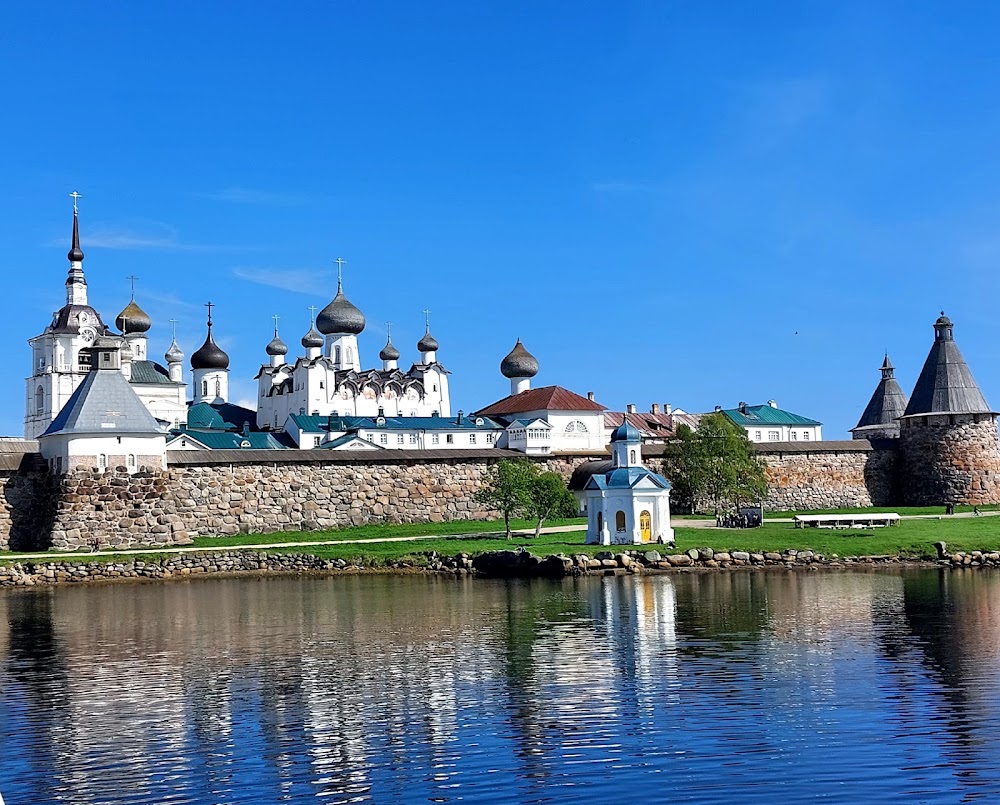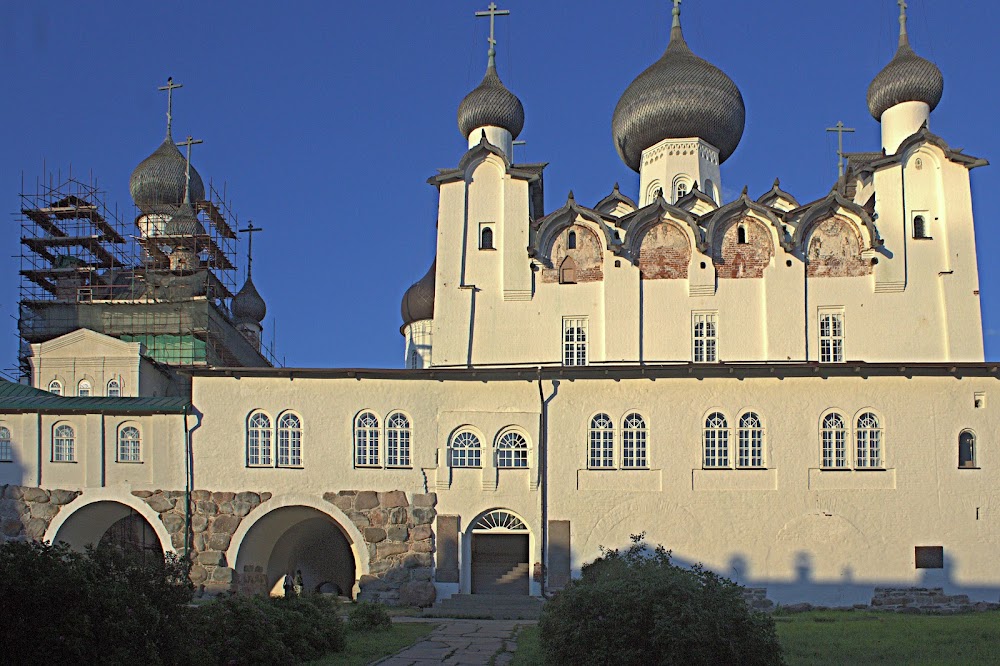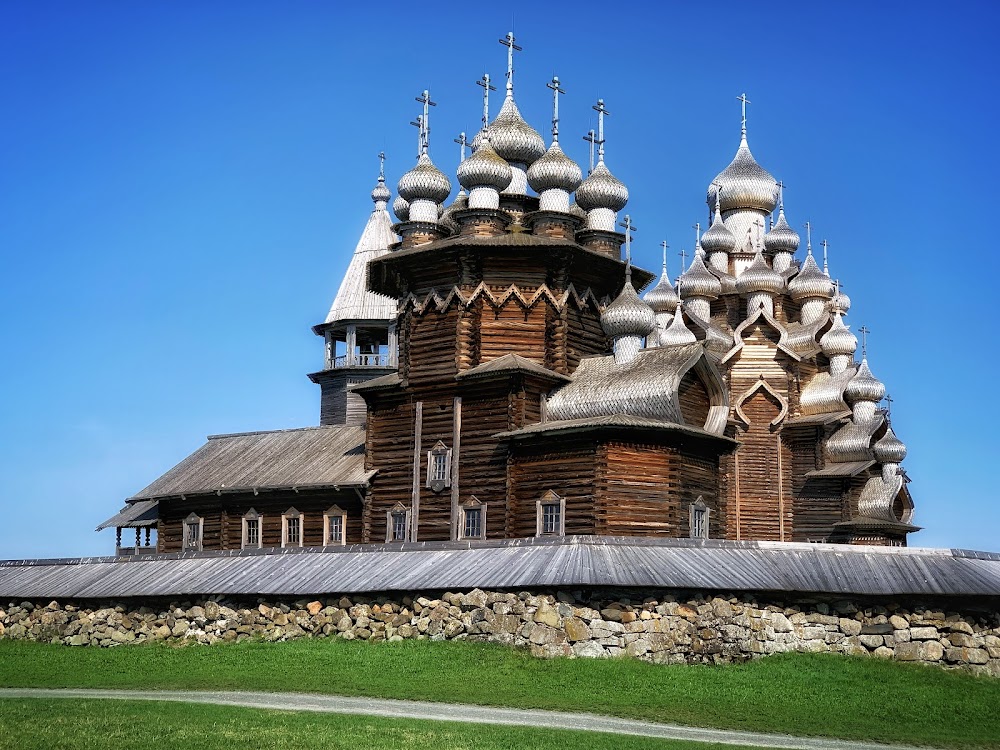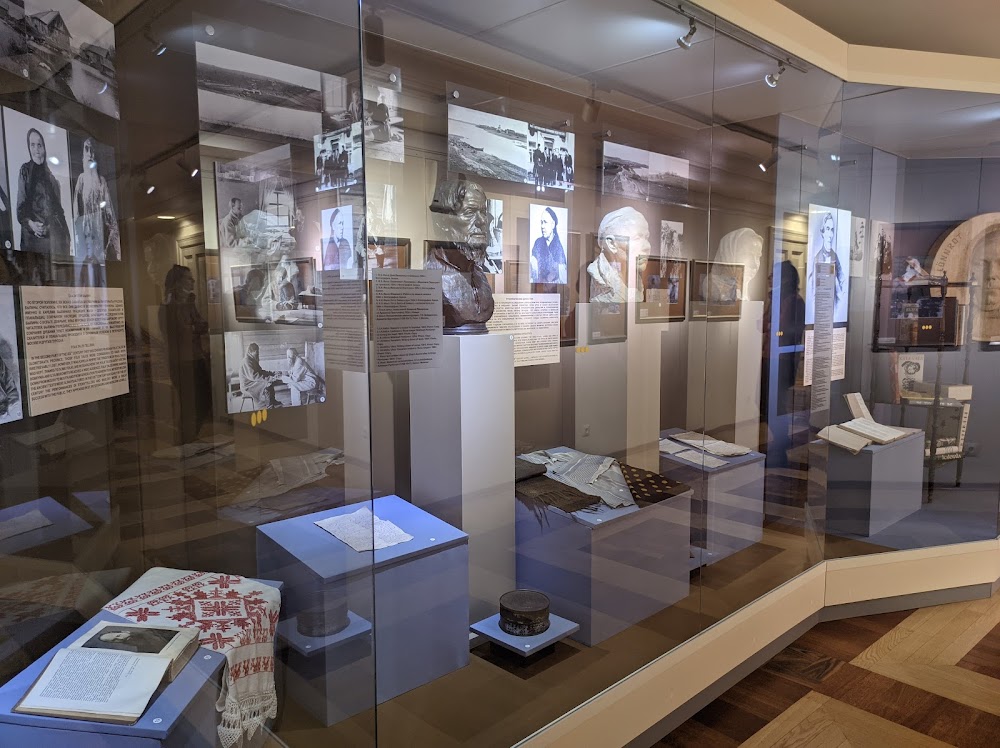Solovetsky Monastery (Соловецкий монастырь)
Overview
Overview of Solovetsky Monastery
Solovetsky Monastery, often referred to as Solovki, is a remarkable fortified complex situated on the Solovetsky Islands in Onega Bay, within Russia's Republic of Karelia. Established in 1436 by two monks, German and Zosima, this historic site has evolved from a humble monastic community into a significant cultural and spiritual landmark.
Origins and Early Development
The monks chose this remote location for its isolation, perfect for spiritual contemplation and ascetic living. Initially, the monastery's structures were simple wooden buildings made from the local timber. As the monastic community flourished, the monastery underwent significant expansions, gradually transforming its architecture and resources.
Rise to Prominence
By the mid-16th century, Solovetsky Monastery had emerged as a vital religious and economic center. Under the stewardship of Abbot Philip, who later became Metropolitan Philip II of Moscow, the monastery replaced its wooden structures with durable stone buildings. Local granite and limestone were utilized to construct impressive edifices, such as the Cathedral of the Transfiguration and the Church of the Dormition, showcasing the architectural mastery of the era.
Defensive Architecture
In response to external threats, including incursions from Swedish and Danish forces, as well as local uprisings, the monastery fortified itself with high stone walls, towers, and bastions. This fortification not only provided protection but also gave the monastery a distinctive fortress-like appearance, exemplifying Russia's engineering prowess in fortification architecture.
Economic and Agricultural Center
Beyond its spiritual functions, the monastery thrived as a center of trade and agriculture. The monks engaged in salt production, fishing, and shipbuilding. They also constructed intricate waterworks, including canals and dams, to effectively manage the island's water supply and support their various industries, reinforcing the monastery's status as a self-sustaining community.
Spiritual Beacon and Cultural Hub
From the 16th to the 17th century, Solovetsky Monastery stood as a beacon of Orthodox Christianity, housing a vast library of manuscripts and attracting pilgrims from across the region. It played a crucial role in Russia's northern expansion, fostering the spread of Orthodoxy among indigenous populations.
Challenges and Uprisings
However, the monastery's peaceful existence faced turmoil. In the mid-17th century, the Solovetsky Uprising (1668-1676) occurred, as monks resisted the liturgical reforms imposed by Patriarch Nikon of Moscow. This rebellion culminated in a siege by Tsarist forces, leading to the tragic defeat of the monks.
20th Century Transformation
The monastery's history took a darker turn in the 20th century. After the Bolshevik Revolution in 1917, the Soviet government secularized the site, converting it into a prison camp known as SLON (Solovetsky Special Purpose Camp). This camp was one of the first Soviet Gulags, marked by extreme suffering and hardship. It wasn't until the 1990s, following the dissolution of the Soviet Union, that the monastery was restored to its religious functions.
UNESCO World Heritage Site
Today, Solovetsky Monastery is recognized as a UNESCO World Heritage site, celebrated for its historical, cultural, and spiritual significance. The restored buildings now serve as active places of worship, embodying the resilience of faith throughout the ages. Both pilgrims and tourists flock to the monastery to admire its striking architecture, embrace its spiritual heritage, and reflect on its complex history.
A Legacy of Faith and Resilience
The story of Solovetsky Monastery is one of faith, resilience, and transformation. From its origins as a wooden refuge for monks to its evolution into a formidable fortress and spiritual stronghold, the monastery continues to represent Russia's rich religious and cultural legacy, inviting all who visit to connect with its profound history.






